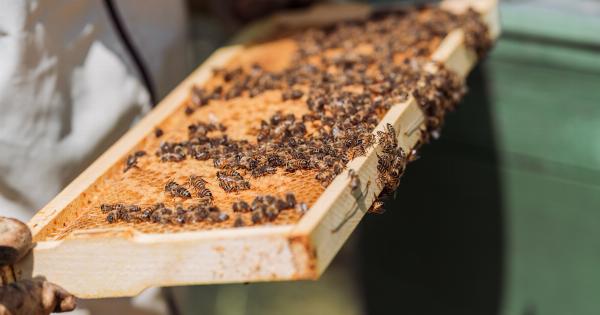Do you struggle to limit your child’s sugar intake? You’re not alone. Children have a natural desire for sweets, but it’s essential to prevent them from consuming too much.
Overconsumption of sugary foods and drinks has been linked to a range of health concerns, including obesity, diabetes, and tooth decay. Therefore, it’s vital to encourage healthy eating habits from a young age. In this article, we’ve compiled a list of 30 ways to limit the sweet tooth in your kids.
1. Lead by Example
Children often model their behavior on their parents. Therefore, it’s essential to demonstrate healthy eating habits yourself. Avoid snacking on sweets and instead choose fruits, vegetables, and other nutritious snacks.
When your child sees you making healthy choices, it’s more likely that they will follow your lead.
2. Be Mindful of Marketing
Children are particularly susceptible to advertising and marketing. Companies often use colorful packaging and catchy slogans to appeal to children. Therefore, it’s crucial to be mindful of the advertisements your child is exposed to.
Try to avoid buying products that have high levels of sugar, salt, or saturated fats.
3. Choose Alternatives
Instead of sugary snacks, choose healthier alternatives. For example, you could swap sugary drinks for water or fruit juice. Replace candy bars with fruit, nuts, or seeds.
Small changes like this can make a significant difference to your child’s sugar intake.
4. Provide Nutritious Meals
One of the most effective ways to limit your child’s sweet tooth is to provide nutritious meals. Make sure that your child’s diet includes a variety of fruits, vegetables, whole grains, and lean proteins.
These foods will provide your child with the nutrients they need to grow and develop healthily.
5. Don’t Use Food as a Reward
It’s tempting to use food as a reward for good behavior, but this can reinforce the idea that sugary foods are a treat. Instead, try to find other ways to reward your child. For example, you could offer extra playtime or a favorite activity.
6. Encourage Healthy Snacks
Offering healthy snacks between meals can help to reduce the likelihood of your child reaching for sugary foods. Provide chopped vegetables, whole-grain crackers, or low-fat yogurt as a snack option.
7. Set Limits
Setting limits on your child’s sugar intake can help to reduce their cravings. Explain to your child why it’s essential to limit their sugar intake and set boundaries on how much they can consume.
8. Read Labels
Reading food labels can help you to identify foods that are high in sugar. Look out for ingredients such as high-fructose corn syrup, glucose, and sucrose, which are all forms of sugar. Try to avoid foods that have high levels of added sugars.
9. Offer Water Instead of Sugary Drinks
Soda, sports drinks, and sweetened tea and coffee can all be high in sugar. Offer water as a substitute instead. You could add slices of fruit, such as lemon or cucumber, to make it more appealing to your child.
10. Limit Juice Consumption
Although fruit juice may seem like a healthy option, it can be high in sugar. Limit your child’s juice consumption and choose 100% fruit juice, which is lower in added sugars than juice drinks.
11. Make Homemade Snacks
Baking homemade snacks can be a fun activity to do with your child, and it’s an excellent way to control their sugar intake. Try recipes that use natural ingredients and reduce the amount of sugar added.
12. Educate Your Child
Teaching your child about the importance of a healthy diet can help to reduce their cravings for sugary foods. Explain why it’s essential to eat a balanced diet and offer healthy choices as much as possible.
13. Avoid Skipping Meals
Skipping meals can lead to cravings for sugary snacks. Ensure that your child eats three nutritious meals a day and snacks on healthy options in between.
14. Cut Down on Processed Foods
Processed foods, such as candy, chips, and cookies, can all be high in sugar. Limit your child’s consumption of these foods and offer healthier alternatives instead.
15. Use Natural Sweeteners
If you are baking at home, consider using natural sweeteners instead of processed sugar. Honey, maple syrup, and agave nectar are all healthy options that can be used as substitutes.
16. Remove Sugary Foods from the Home
It’s harder for your child to consume sugary foods if they aren’t readily available in the home. Remove candy, cookies, and other treats from your cupboards, and replace them with healthier options.
17. Plan Your Meals in Advance
Planning your meals in advance can help to reduce the likelihood of your child reaching for sugary snacks. Make sure that your meals include a balance of nutrients and offer healthy snacks in between.
18. Allow for Treats in Moderation
It’s unrealistic to expect your child to never consume sugary treats. Allow for treats in moderation, but be sure to set clear boundaries on how much they can have.
19. Choose Whole Foods
Whole foods are often lower in added sugars than processed foods. Offer your child plenty of fresh fruits, vegetables, and lean proteins to keep them healthy and satisfied.
20. Get Your Child Involved in Meal Planning
Getting your child involved in meal planning can be a fun way to encourage healthier eating habits. Ask your child for their input on which foods they’d like to eat and involve them in preparing meals.
21. Offer Healthy Dessert Options
Desserts don’t have to be unhealthy. Offer your child healthy dessert options, such as fresh fruit or low-fat yogurt with berries.
22. Use Small Plates
Using smaller plates can help to encourage portion control. Your child will feel satisfied with a smaller portion of food if it’s served on a smaller plate.
23. Avoid Eating in Front of the TV
Eating in front of the TV can lead to mindless snacking. Encourage your child to sit at the table with the family during mealtimes to avoid overeating.
24. Choose Low-Sugar Cereals
Cereals can be high in sugar, so choose options that are low in added sugars. Look out for whole-grain cereals that are fortified with nutrients.
25. Offer Fruit as a Dessert
Fresh fruit is a delicious and healthy alternative to sugary desserts. Offer fruit salad, sliced fruit, or fruit kebabs as a dessert option instead of cookies or ice cream.
26. Control Your Child’s Access to Sugary Foods
Control your child’s access to sugary foods by storing them out of reach. This will make it harder for your child to grab a snack whenever they feel like it.
27. Use Herbs and Spices
Herbs and spices can add natural sweetness to dishes without the need for added sugars. Try adding cinnamon, nutmeg, or vanilla to your child’s food to increase the appeal.
28. Encourage Exercise
Encouraging your child to exercise can help to reduce their cravings for sugary snacks. Physical activity releases endorphins, which help to reduce stress and anxiety.
29. offer Healthy Drink Options When Eating Out
When eating out, offer your child healthy drink options instead of soda or sugary drinks. Ask for water or fruit juice instead.
30. Be Patient
Changing your child’s eating habits takes time and patience. Don’t expect changes to happen overnight. Be persistent and consistently offer healthy choices to your child.































